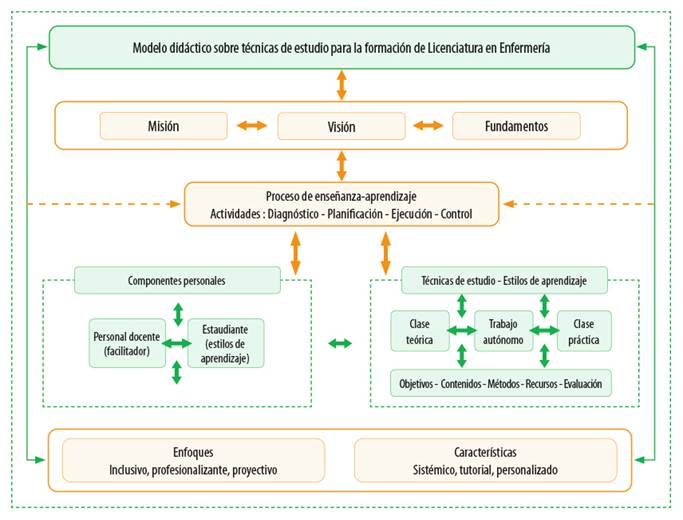Abstract
Objective. To design a didactic model for teaching based on the study techniques applied by nursing students in an Ecuadorian university.
Methodology. A quasi-experimental study with pre- and post-intervention evaluation of a particular group and experts in pedagogy validated the proposed didactic model. The universe was made up of students in the first and seventh semesters of the bachelor’s degree in nursing from an Ecuadorian university. The intervened group corresponded to 80 students of regular attendance and enrolled in the total credits of the selected semesters. An instrument adapted from the Study Skills Survey proposed by Brown & Holtzman (1990) was applied. Descriptive statistics of frequency and percentage were analyzed.
Results. The data obtained before and after the application of the model were significant; the didactic model combines, through the diagnosis, planning, execution, and control of actions, a system of relationships between understanding, analysis, and health needs, with an emphasis on communication and people skills, emotional stability, and physical resistance.
Discussion. The implementation contributed to the improvement of the organization, planning of activities, adoption of study techniques, and motivation of students to conduct the academic activities of independent work of the bachelor’s degree in nursing, as well as to project the articulation of the knowledge learned at the university in their working life.
Conclusion. The model could be the basis for improving teaching and learning strategies for future curricular designs for nursing education.
Keywords: Teaching; learning; learning experiences; nursing students; nursing education: SDG 4; Quality education

 Didactic model based on study techniques: an analysis in nursing studenst from Ecuador
Didactic model based on study techniques: an analysis in nursing studenst from Ecuador Thumbnail
Thumbnail
 Nota: Elaboración propia a partir de la estrategia de intervención vinculo la formulación de un modelo didáctico sobre técnicas de estudio para la formación de Licenciados en Enfermería.
Nota: Elaboración propia a partir de la estrategia de intervención vinculo la formulación de un modelo didáctico sobre técnicas de estudio para la formación de Licenciados en Enfermería.


